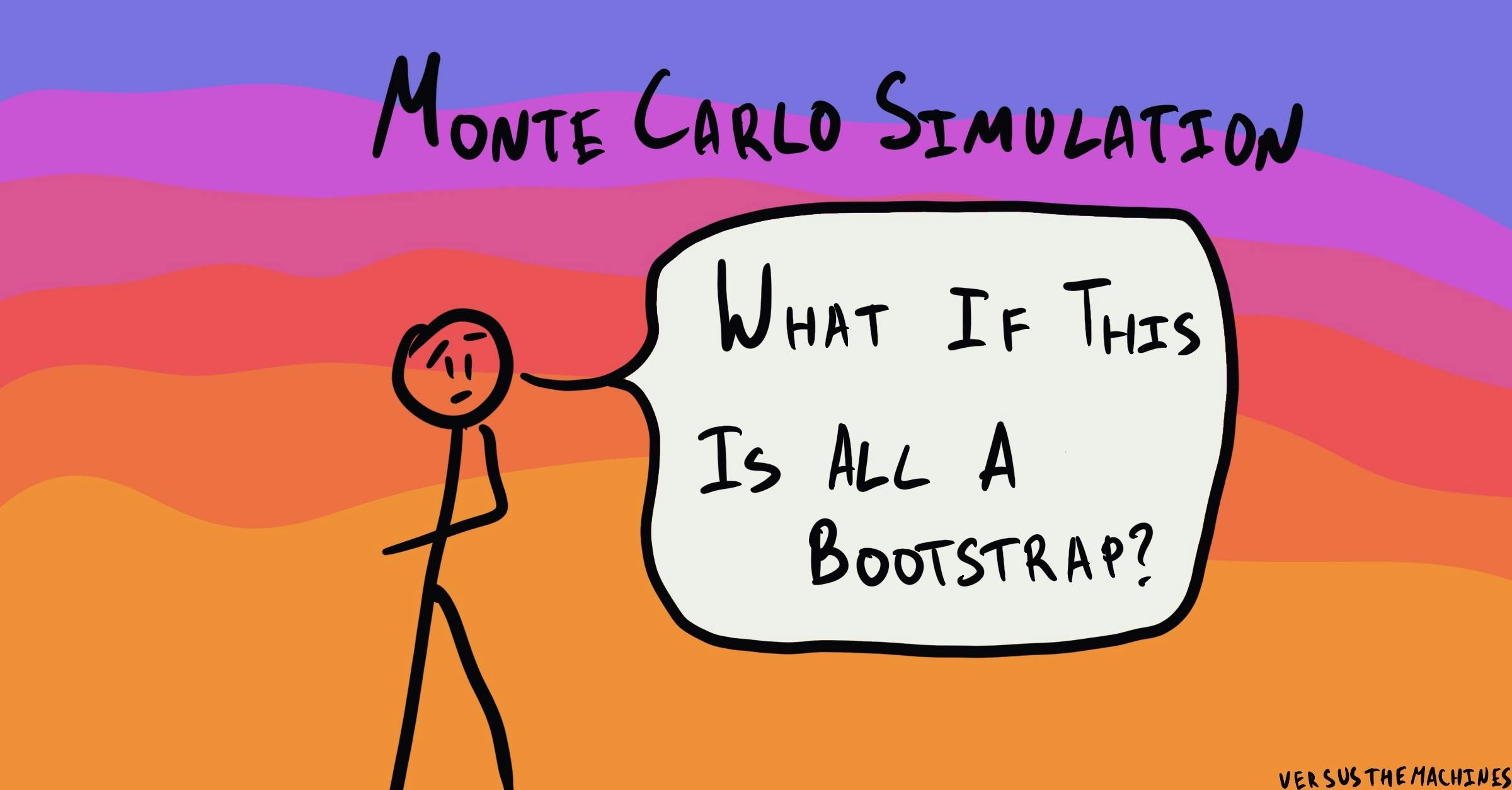Monte Carlo Simulation
The Basic Idea
As the name suggests, the Monte Carlo simulation (also referred to as the Monte Carlo method) is a tool that takes its inspiration from the world of gambling, and Monaco’s glamorous casino city in particular. Invented by John von Neumann and Stanislaw Ulam during World War II, the Monte Carlo simulation aims to improve decision making by incorporating randomness and chance into a theoretical model. Its main purpose is to analyze a decision and churn out a range of possible outcomes and their probabilities. By showing the possibilities of extreme actions, as well as ‘middle-of-the-road’ actions, the Monte Carlo method provides decision makers with a useful blueprint that can facilitate scenario planning. The technique is still used today in a wide range of settings, including finance, manufacturing, insurance project management, research and development, oil and gas and engineering.

Theory, meet practice
TDL is an applied research consultancy. In our work, we leverage the insights of diverse fields—from psychology and economics to machine learning and behavioral data science—to sculpt targeted solutions to nuanced problems.
Key Terms
Probability - the measure of the likelihood that an event will occur in a random test. Probability is generally quantified as a number between 0 and 1, where 0 indicates impossibility, and 1 indicates certainty. For example, if you were to toss a coin, the probability of it landing on heads would be 0.5 since there is an equal chance that it will or will not land on heads (the probability of it landing on tails is also 0.5).
Simulation - a model or enactment of events based on artificially generated data. Statisticians rely on simulations to test assumptions and make predictions in the face of uncertainty.
History
The Monte Carlo simulation was developed by Stanislaw Ulam, a World War II scientist who was involved in the Manhattan Project (the United States’ effort to build nuclear weapons). After the war, and during his recovery from brain surgery, Ulam found himself playing the card game Solitaire on a frequent basis. His mathematical mind became obsessed with predicting the potential outcome of each game of Solitaire he played, but given the huge range of potential outcomes, he quickly realized he would need more than a sophisticated formula. Instead, he decided to play a large enough sample of solitaire games and count how many games he could potentially win, and how many he couldn’t. He figured that by repeatedly running iterations of the game, he would end up with a reasonable estimation of the probability of winning each one.1
Ulam shared his idea with his Manhattan Project colleague John von Neumann, who immediately saw its potential. The pair agreed that the technique could also be applied to nuclear science, and so a project with the codename ‘Monte Carlo’ was born. The simulation was first used as a way to understand the statistical behavior of neutrons during a nuclear explosion.2 Ulam and von Neumann used early-stage computers to simulate the random behavior of a large sample of neutrons, and based predictions of future neutron behavior (and therefore the likely strength of nuclear explosions) on the data they collected.
People
Stanislaw Ulam
Polish-American scientist and mathematician who participated in the Manhattan Project, co-invented the Teller–Ulam design of thermonuclear weapons, discovered the concept of the cellular automaton, and invented the Monte Carlo
John von Neumann
Hungarian-American mathematician, physicist, computer scientist and computer scientist. Von Neumann was considered one of the greatest mathematicians of his time. He founded the first mathematical framework for quantum mechanics, now known as the Dirac-von Neumann axioms, and is credited with inventing the mathematical foundation for game theory. Along with Stanislaw Ulam, he worked at the Manhattan Project and co-invented the Monte Carlo simulation.
Consequences
The consequences of the Monte Carlo simulation outlived the Manhattan Project, as well as Ulam and von Neumann themselves. Advancements in the technique continued well into the 1960s, as military organizations including the US Air Force and RAND Corporation ramped up support and funding for research during the Cold War.3
Variations of the original simulation also emerged in the latter half of the 20th century. This included the Quantum Monte Carlo, used to study complex quantum systems in chemistry.4 Another variation is the Sequential Monte Carlo, a tool used in modern Baynesian statistics to facilitate greater flexibility and the capture of random variables in inferential models.5
Today, the Monte Carlo simulation remains a central tool for financial forecasting and risk assessment. In finance, simulated probabilities are generated to estimate stock prices and calculate insurance premiums. Similarly, in project management, the technique is used to manage workflows and facilitate accurate scenario planning. Most recently, the Monte Carlo simulation has been deployed to estimate environmental risk and the effects of climate change,6 as well as advancements in machine learning and artificial intelligence.
Controversies
Given its wide reach and vast application, the Monte Carlo simulation has not escaped its fair share of criticism. One common criticism is that the analysis fails to factor extremely random or infrequent events into its model, such as market crashes, natural disasters, or the unexpected loss of personnel that can be crucial to a particular project. Secondly, as with all models, the quality of the output depends entirely on the quality of the input. Therefore, if the simulation is narrow in scope and fails to account for all reasonable variables, the addition of ‘chance’ or ‘randomness’ variables won't necessarily redeem it. As John Nersesian, head of adviser education at investment management company PIMCO once said in a Market Watch interview, “A small change in any of these inputs can produce a significantly different projection. Think ‘garbage in, garbage out.’”7
Case Studies
Military & Defence
The Monte Carlo simulation remains a crucial tool in military risk calculation. Military manufacturers rely on software based on Monte Carlo to help measure the probabilities of various risky scenarios - both in combat and at an operational level, including in their engineering and project management teams. One example is Palisade’s @RISK, a software that allows companies to test engineering practices and ensure that high budget projects are managed effectively.8
The US Coast Guard also uses Monte Carlo simulations in its modelling software to predict the locations of ships during search and rescue missions.9 Each simulation can generate thousands of data points which are randomly distributed, allowing for the generation of search patterns. This practical application of probability distribution allows commanders to select the fastest and most efficient method of rescue operation, saving both human lives and military resources.
Executive Pay
Depending on where they are situated in the world, most publicly listed companies are legally required to publish market value estimates of their executives’ compensation. However, most CEOs are compensated through stock awards, the value of which are difficult to predict since they depend entirely on the company’s performance. Therefore, the transparency and predictability of executive compensation is typically a grey area, even for some of the world’s largest and best-known companies.
That’s why regulators and companies have turned to the Monte Carlo simulation in recent years.2 In this application, the company's future stock price is repeatedly simulated using a randomized model based on the typical evolution of stock prices, as well as specific data on the stock's historical performance. Each simulated stock price is then used to calculate the market value of the executive’s reward, based on the specific terms of their compensation agreement. For example, if a CEO is contracted to receive 2,000 shares when the stock price is over $50, and 5,000 shares when the stock price passes $100, the model will capture these thresholds and calculate the suitable pay estimate.
The application of the Monte Carlo simulation to executive pay has proven extremely accurate, and is used as a predictive tool by businesses of all sizes who base compensation on some indicator of performance.
Related TDL Resources
Gambler's Fallacy, explained.
The gambler’s fallacy refers to our belief that the probability of a random event occurring in the future is based on how frequently it occurred in the past We may imagine, for example, that a coin who has landed on heads twice is most likely to land on tails on its third flip. Because of its inaccuracy, the gambler’s fallacy can cause us to make poor judgements of probabilities and therefore, poor decisions.
Data Science
This article explores the topic of data science and how the data we collect is analysed and used to develop an algorithmic understanding of our identities. The Monte Carlo simulation is one process that allows data scientists to build uncertainty into models that predict human behavior and decision outcomes.
Sources
- Encyclopaedia Britannica (2021). The Monte Carlo Method. Retrieved 18 March 2021, from https://www.britannica.com/science/Monte-Carlo-method
- Kiersz (2019) A mathematical technique originally developed to help build the atomic bomb is now used to figure out how much CEO pay packages are worth — like with Elon Musk. Retrieved 18 March 2021, from https://www.businessinsider.com/monte-carlo-simulations-calculate-value-of-ceo-pay-2019-8?r=US&IR=T
- Platon, V., & Constantinescu, A. (2014). Monte Carlo Method in risk analysis for investment projects. Procedia Economics and Finance, 15, 393-400.
- Science Direct (2021) Quantum Monte Carlo Methods Retrieved 18 March 2021, from https://www.sciencedirect.com/topics/chemistry/quantum-monte-carlo-methods
- Doucet, A., De Freitas, N., & Gordon, N. (2001). An introduction to sequential Monte Carlo methods. In Sequential Monte Carlo methods in practice (pp. 3-14). Springer, New York, NY.
- Cubasch, U., Santer, B. D., Hellbach, A., Hegerl, G., Höck, H., Maier-Reimer, E., ... & Voss, R. (1994). Monte Carlo climate change forecasts with a global coupled ocean-atmosphere model. Climate Dynamics, 10(1-2), 1-19.
- Powell, R. (2021). Opinion: Should you use a Monte Carlo simulation to determine if your retirement savings will last?. Marketwatch. Retrieved 18 March 2021, from https://www.marketwatch.com/story/should-you-use-a-monte-carlo-simulation-to-determine-if-your-retirement-savings-will-last-11611607222
- Palisade. (2021). @RISK in Defense & Aerospace: Risk Analysis using Monte Carlo Simulation in Excel. Retrieved 19 March 2021, from https://www.palisade.com/risk/defense-aerospace.asp
- Dice Insights (2014) How the Coast Guard Uses Analytics to Search for Those Lost at Sea". Retrieved 19 March 2021, from https://insights.dice.com/2014/01/03/how-the-coast-guard-uses-analytics-to-search-for-those-lost-at-sea/


